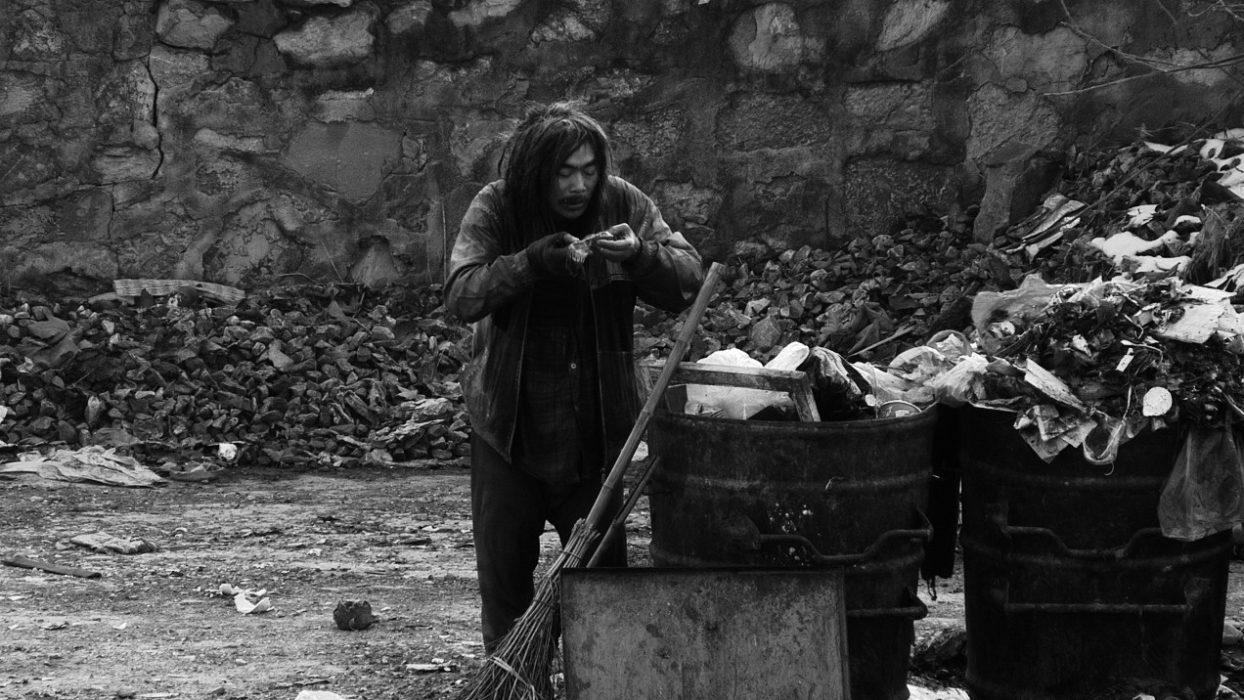Changjiang
A Yangtze Landscape
- 2017
- China
- 156 minutes
- Chinese
From the port of Shanghai to its source in Tibet, a journey along the Yangtze River. The factual intertitles and halts that punctuate it recall the violence of recent Chinese history.
Xu Xin, born close to the Yangtze, transforms the river into an immense tracking rail stretching several thousand kilometres. This gentle journey and the contemplative tone of the black-and-white are immediately undermined by the neon sign on a Shanghai skyscraper insisting: “You can and must obey the law.” The Yangtze, dubbed Mother River under Mao, is revealed as a synecdoche of the country as intertitles pointing up recent events appear along the river’s course. The stops are opportunities to draw the portraits of isolated locals – as if the tramp in Wang Bing’s Man with No Name had become a multitude – scavenging in dustbins after the New Year festivities. In the old village of Datong, a destitute carpenter struggles to saw a plank, a remnant of the industrial gestures of this local capital formerly known as Little Shanghai. Whereas testimonies were at the heart of Karamay and Pathway (screened at Cinéma du Réel), here it is the landscape that reveals the ravages of History. Even the fisherman named Cai Liesheng, who had his nets shredded by a dredging crane and was maimed because he attempted to protest, scans the distant horizon silently. This silence lends unsuspected breadth to the human cost of industrialisation, patent in the region of the Three Gorges Dam, where whole villages have been wiped off the map. The litany of tragedies makes us aware of the massive number of sacrificed lives and, politically speaking, it is no accident that the journey terminates at the river’s source – in Tibet. (Charlotte Garson)
- Production : Jun Zhang; Feixue Xu; Zhixin Lu
- Editing : Xu Xin
- Sound : Xu Xin
- Photography : Xu Xin






